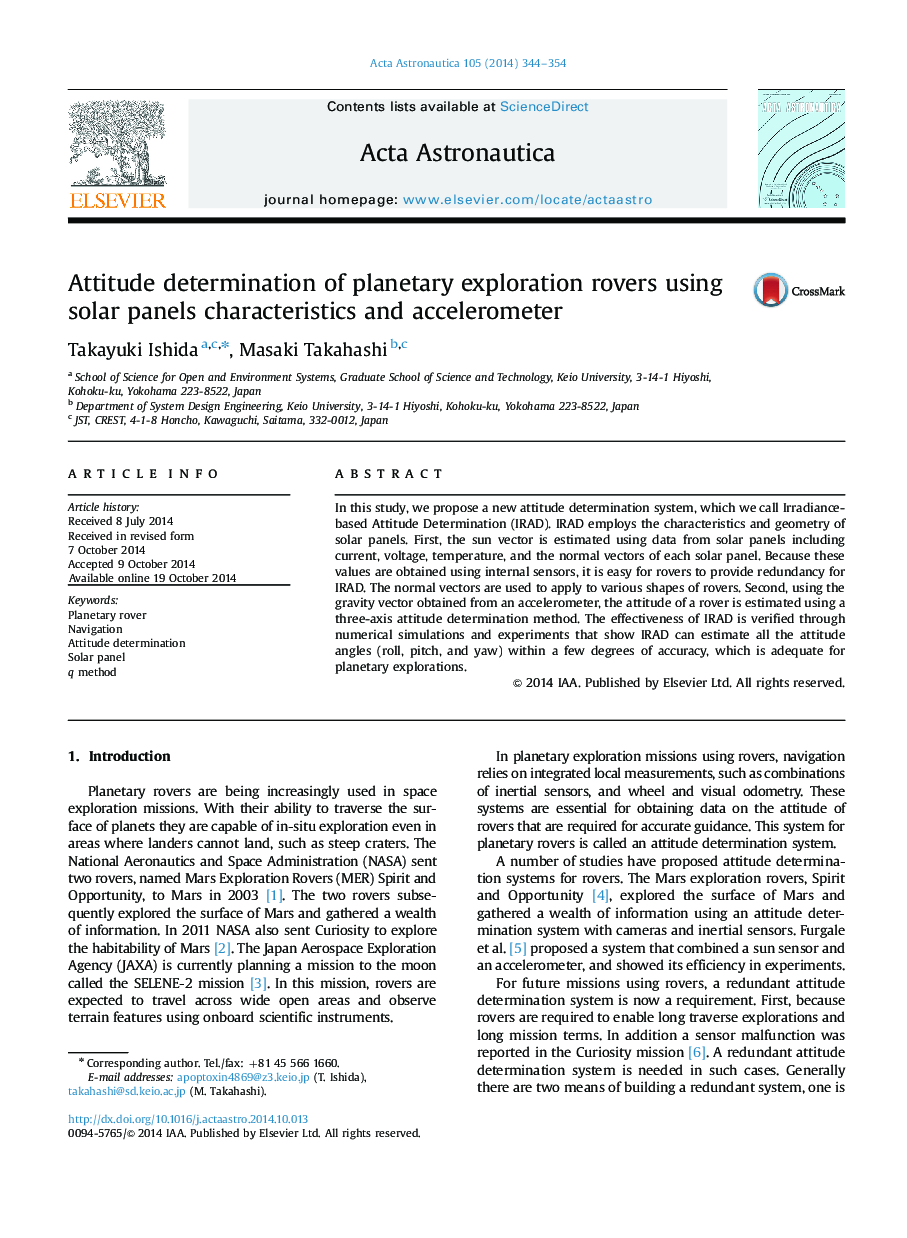| Article ID | Journal | Published Year | Pages | File Type |
|---|---|---|---|---|
| 1714529 | Acta Astronautica | 2014 | 11 Pages |
•IRAD (Irradiance-based Attitude Determination) is proposed for exploration rovers.•IRAD uses solar panels characteristics and arrangement, and an accelerometer.•IRAD does not use any external sensors such as cameras or sun sensors.•The conditions to apply IRAD to exploration rovers are shown.•We verify the effectiveness of IRAD through numerical simulations and experiments.
In this study, we propose a new attitude determination system, which we call Irradiance-based Attitude Determination (IRAD). IRAD employs the characteristics and geometry of solar panels. First, the sun vector is estimated using data from solar panels including current, voltage, temperature, and the normal vectors of each solar panel. Because these values are obtained using internal sensors, it is easy for rovers to provide redundancy for IRAD. The normal vectors are used to apply to various shapes of rovers. Second, using the gravity vector obtained from an accelerometer, the attitude of a rover is estimated using a three-axis attitude determination method. The effectiveness of IRAD is verified through numerical simulations and experiments that show IRAD can estimate all the attitude angles (roll, pitch, and yaw) within a few degrees of accuracy, which is adequate for planetary explorations.
